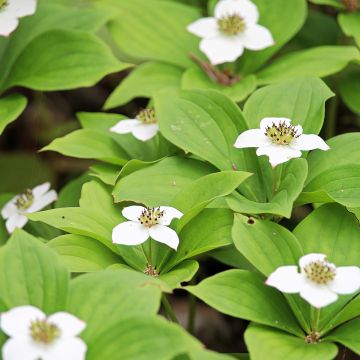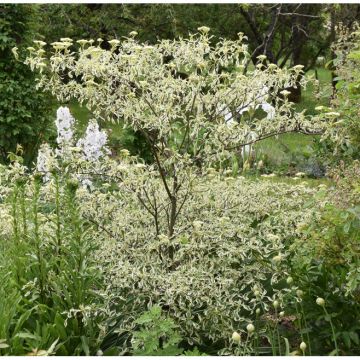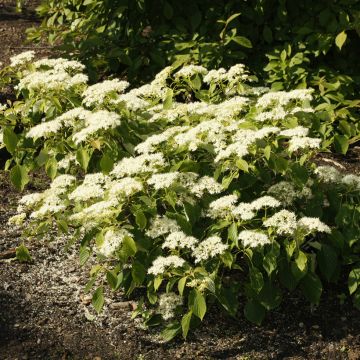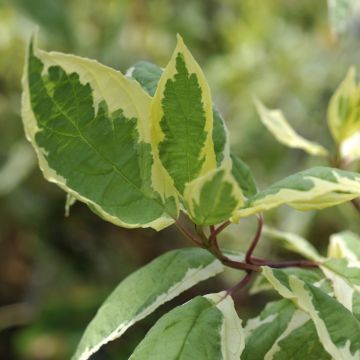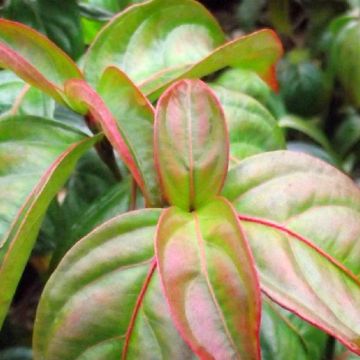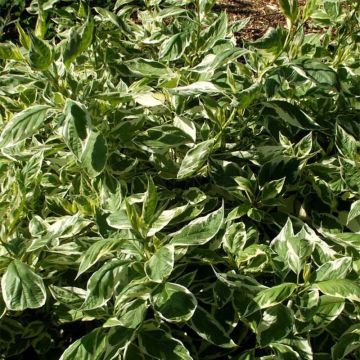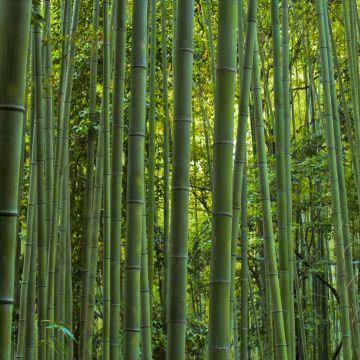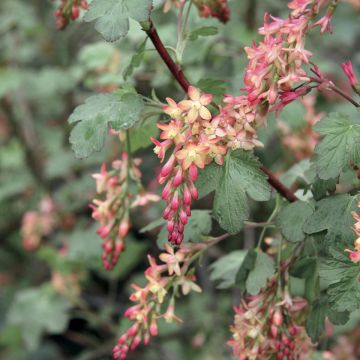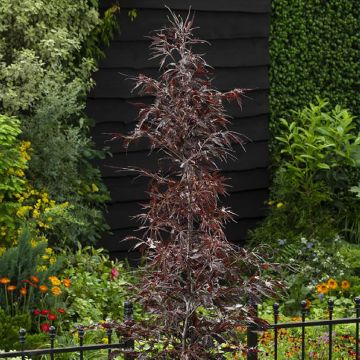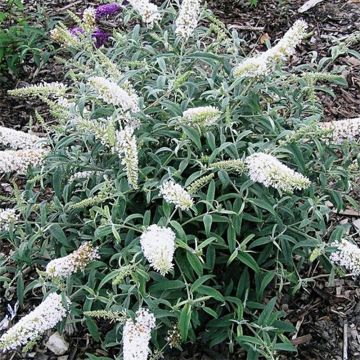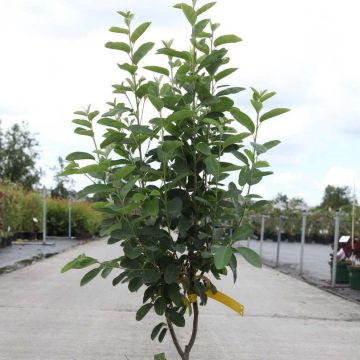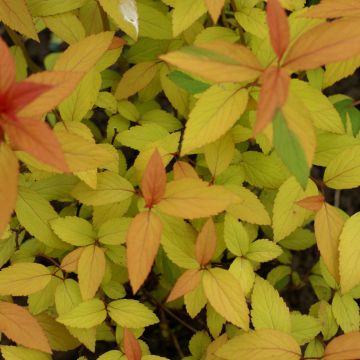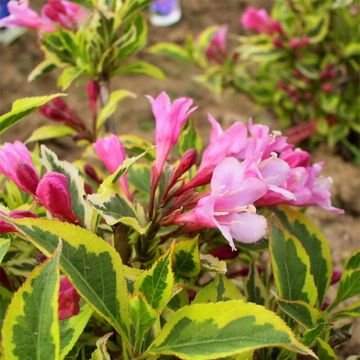

Cornus alba Kesselringii - White Dogwood


Cornus alba Kesselringii - White Dogwood


Cornus alba Kesselringii - White Dogwood


Cornus alba Kesselringii - White Dogwood


Cornus alba Kesselringii - White Dogwood


Cornus alba Kesselringii - White Dogwood
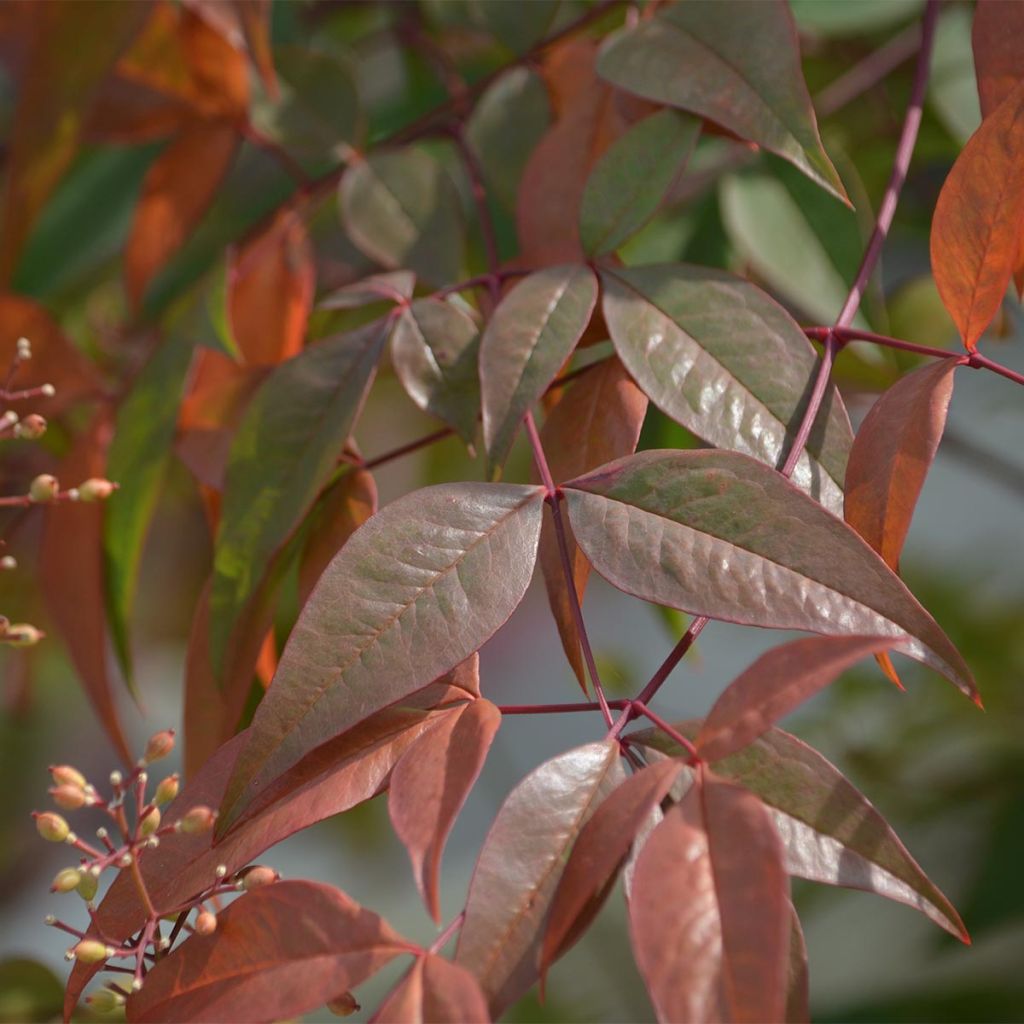

Cornus alba Kesselringii - White Dogwood
Cornus alba Kesselringii - White Dogwood
Cornus alba Kesselringii
White Dogwood, Siberian Dogwood
Well received in its packaging. Nothing to say about the overall condition of the plant. Soaking the root ball before its final planting. Shouldn't have any issues with establishment. To be monitored.
Olivier, 12/02/2024
Special offer!
Receive a €20 voucher for any order over €90 (excluding delivery costs, credit notes, and plastic-free options)!
1- Add your favorite plants to your cart.
2- Once you have reached €90, confirm your order (you can even choose the delivery date!).
3- As soon as your order is shipped, you will receive an email containing your voucher code, valid for 3 months (90 days).
Your voucher is unique and can only be used once, for any order with a minimum value of €20, excluding delivery costs.
Can be combined with other current offers, non-divisible and non-refundable.
Home or relay delivery (depending on size and destination)
Schedule delivery date,
and select date in basket
This plant carries a 24 months recovery warranty
More information
We guarantee the quality of our plants for a full growing cycle, and will replace at our expense any plant that fails to recover under normal climatic and planting conditions.
Would this plant suit my garden?
Set up your Plantfit profile →
Description
The Cornus alba Kesselringii is a type of white dogwood notable for its red-coloured wood that turns dark brown-violet, almost black, clearly noticeable during winter. It also has reddish young leaves and beautiful reddish-brown autumn foliage. During spring, it bears cream-coloured flowers that give way to bluish-white berries. This deciduous shrub has a dense and bushy habit, making it an attractive plant for any garden. It can be planted in a hedge or along a large pathway in garden soil. To maintain its vibrant colour, it is essential to prune the old stems right down at the end of winter, as only the new shoots are coloured.
The white dogwood 'Kesselringii' is a seedling that was discovered in the botanical garden of St. Petersburg in 1905. It belongs to the cornaceae family and comes from the Cornus alba variety native to Siberia. This species can be found on the banks of the Amur River and in humid deciduous and coniferous forests in nature. The shrub always grows near water sources and is known for its strength and ability to survive in harsh and contrasting climates.
The 'Kesselringii' variety is a shrub that grows branches covered with red bark, which becomes darker at the end of the season. It has a bushy and abundant appearance and can grow as tall as it is wide at maturity. However, repeated pruning can give it a wider dome-like shape. At the age of 10 years, it can reach up to 3 metres (9 to 10 ft) in all directions. This fast-growing shrub has a thicket-like appearance, with young coloured branches being its first asset. Its deciduous foliage consists of opposite, ovate leaves, which are 4 to 8 cm (1.6 to 3.1 in) long. These leaves are tinged with red when they emerge in spring, turn medium green, and end up reddish-brown-purple before falling. The leaves are entire, clearly veined, undulate, and have a pointed tip. Although its flowering is quite discreet, it is nectar-rich and appears as small white-yellowish flowers arranged in cymes. This is followed by fruiting with creamy white berries containing oily seeds that turn bluish when ripe. Moreover, the lower branches of the shrub form suckers or root in the ground without being invasive.
The Cornus alba 'Kesselringi' is a versatile shrub that can grow in any type of soil, including limestone and clay, even if it becomes dry during summer. It can adapt to most climates and is an easy-to-maintain plant, requiring only an annual pruning of old stems near the stump to promote the growth of new, colourful shoots. The shrub can be used as a standalone plant in the centre of a flower bed or combined with other deciduous or evergreen shrubs with dark foliage to enhance the colours of its leaves and branches. It is also perfect for creating a free hedge when combined with viburnums, lilacs, or amelanchiers. In a large garden, it can be planted en masse along a pathway at the edge of the property, or in front of larger evergreen shrubs such as Elaeagnus ebbingei, Photinia, Cypress, laurel, and many others. Since it thrives near water, it can be planted with the Cornus stolonifera Faviramea with yellow bark behind a foreground of astilbes, not far from a pond.
Report an error about the product description
Cornus alba Kesselringii - White Dogwood in pictures


Plant habit
Flowering
Foliage
Botanical data
Cornus
alba
Kesselringii
Cornaceae
White Dogwood, Siberian Dogwood
Cultivar or hybrid
Other Cornus
View all →Planting and care
The Cornus alba Kesselringii is a shrub that grows best in moist, fertile, and humus-rich soil. It can also tolerate slightly chalky, damp, and heavy soil as long as it is deep and not too compact or dry. The ideal time to plant it is between November and March, and it should be planted in a sunny location to enhance the colours of its foliage. Alternatively, it can be grown in bright, partial shade. This shrub is highly resistant to cold weather and can withstand hot summers.
Planting period
Intended location
Care
-
, onOrder confirmed
Reply from on Promesse de fleurs
Similar products
Haven't found what you were looking for?
Hardiness is the lowest winter temperature a plant can endure without suffering serious damage or even dying. However, hardiness is affected by location (a sheltered area, such as a patio), protection (winter cover) and soil type (hardiness is improved by well-drained soil).

Photo Sharing Terms & Conditions
In order to encourage gardeners to interact and share their experiences, Promesse de fleurs offers various media enabling content to be uploaded onto its Site - in particular via the ‘Photo sharing’ module.
The User agrees to refrain from:
- Posting any content that is illegal, prejudicial, insulting, racist, inciteful to hatred, revisionist, contrary to public decency, that infringes on privacy or on the privacy rights of third parties, in particular the publicity rights of persons and goods, intellectual property rights, or the right to privacy.
- Submitting content on behalf of a third party;
- Impersonate the identity of a third party and/or publish any personal information about a third party;
In general, the User undertakes to refrain from any unethical behaviour.
All Content (in particular text, comments, files, images, photos, videos, creative works, etc.), which may be subject to property or intellectual property rights, image or other private rights, shall remain the property of the User, subject to the limited rights granted by the terms of the licence granted by Promesse de fleurs as stated below. Users are at liberty to publish or not to publish such Content on the Site, notably via the ‘Photo Sharing’ facility, and accept that this Content shall be made public and freely accessible, notably on the Internet.
Users further acknowledge, undertake to have ,and guarantee that they hold all necessary rights and permissions to publish such material on the Site, in particular with regard to the legislation in force pertaining to any privacy, property, intellectual property, image, or contractual rights, or rights of any other nature. By publishing such Content on the Site, Users acknowledge accepting full liability as publishers of the Content within the meaning of the law, and grant Promesse de fleurs, free of charge, an inclusive, worldwide licence for the said Content for the entire duration of its publication, including all reproduction, representation, up/downloading, displaying, performing, transmission, and storage rights.
Users also grant permission for their name to be linked to the Content and accept that this link may not always be made available.
By engaging in posting material, Users consent to their Content becoming automatically accessible on the Internet, in particular on other sites and/or blogs and/or web pages of the Promesse de fleurs site, including in particular social pages and the Promesse de fleurs catalogue.
Users may secure the removal of entrusted content free of charge by issuing a simple request via our contact form.
The flowering period indicated on our website applies to countries and regions located in USDA zone 8 (France, the United Kingdom, Ireland, the Netherlands, etc.)
It will vary according to where you live:
- In zones 9 to 10 (Italy, Spain, Greece, etc.), flowering will occur about 2 to 4 weeks earlier.
- In zones 6 to 7 (Germany, Poland, Slovenia, and lower mountainous regions), flowering will be delayed by 2 to 3 weeks.
- In zone 5 (Central Europe, Scandinavia), blooming will be delayed by 3 to 5 weeks.
In temperate climates, pruning of spring-flowering shrubs (forsythia, spireas, etc.) should be done just after flowering.
Pruning of summer-flowering shrubs (Indian Lilac, Perovskia, etc.) can be done in winter or spring.
In cold regions as well as with frost-sensitive plants, avoid pruning too early when severe frosts may still occur.
The planting period indicated on our website applies to countries and regions located in USDA zone 8 (France, United Kingdom, Ireland, Netherlands).
It will vary according to where you live:
- In Mediterranean zones (Marseille, Madrid, Milan, etc.), autumn and winter are the best planting periods.
- In continental zones (Strasbourg, Munich, Vienna, etc.), delay planting by 2 to 3 weeks in spring and bring it forward by 2 to 4 weeks in autumn.
- In mountainous regions (the Alps, Pyrenees, Carpathians, etc.), it is best to plant in late spring (May-June) or late summer (August-September).
The harvesting period indicated on our website applies to countries and regions in USDA zone 8 (France, England, Ireland, the Netherlands).
In colder areas (Scandinavia, Poland, Austria...) fruit and vegetable harvests are likely to be delayed by 3-4 weeks.
In warmer areas (Italy, Spain, Greece, etc.), harvesting will probably take place earlier, depending on weather conditions.
The sowing periods indicated on our website apply to countries and regions within USDA Zone 8 (France, UK, Ireland, Netherlands).
In colder areas (Scandinavia, Poland, Austria...), delay any outdoor sowing by 3-4 weeks, or sow under glass.
In warmer climes (Italy, Spain, Greece, etc.), bring outdoor sowing forward by a few weeks.































